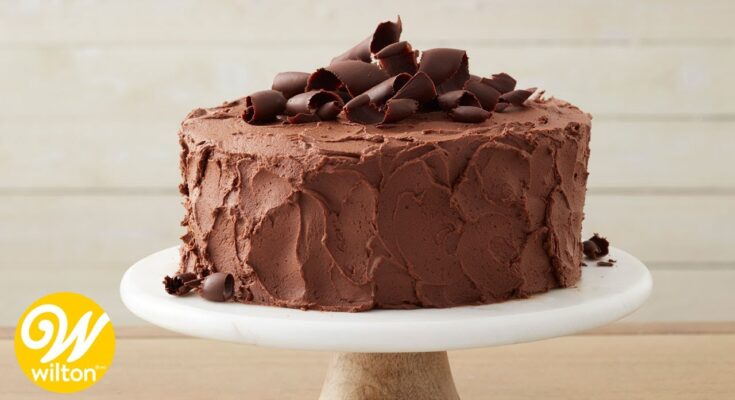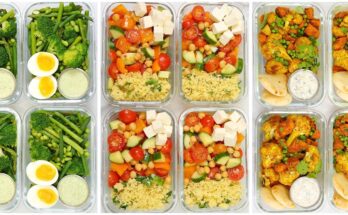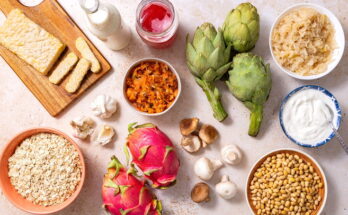Simple Cake Recipe: Who doesn’t love a good homemade cake? Whether you’re a beginner in the kitchen or just looking for a quick and easy recipe, a simple cake is always a winner.
This guide will walk you through an easy-to-follow recipe that’s perfect for all occasions—birthdays, family gatherings, or just because you’re craving something sweet.
Let’s dive right in and bake a cake that will make your taste buds sing!
Ingredients Needed for a Simple Cake
To make a delicious cake, you only need a few basic ingredients that are probably already sitting in your kitchen.
Dry Ingredients
- 2 cups of all-purpose flour.
- 1 ½ cups of sugar.
- 2 teaspoons of baking powder.
- ½ teaspoon of salt.
Wet Ingredients
- 2 large eggs.
- 1 cup of milk.
- ½ cup of unsalted butter (melted).
- 2 teaspoons of vanilla extract.
These simple ingredients come together to create the foundation of a light, fluffy, and flavorful cake.
Tools and Equipment Required
Before you start baking, gather these tools to make the process smooth:
- Mixing Bowls: One for dry ingredients, another for wet ingredients.
- Whisk or Mixer: For combining ingredients evenly.
- Spatula: To scrape down the sides of your bowl.
- Measuring Cups and Spoons: For precise measurements.
- Cake Pan: A round or square pan, greased and lined.
- Oven: Preheated to the correct temperature.
Having everything ready beforehand will save time and keep things stress-free.
Preparation Before Baking
Preheating the Oven
Preheat your oven to 350°F (175°C). This step is crucial because it ensures even baking. Starting with a cold oven can result in an uneven rise, leaving you with a lopsided cake.
Preparing the Cake Pan
Grease your cake pan with butter or a non-stick spray, then line the bottom with parchment paper. This prevents the cake from sticking and ensures easy removal after baking. Don’t skip this step—it’s a lifesaver!
Step-by-Step Cake Making Process
Mixing Dry Ingredients
In a large mixing bowl, combine the all-purpose flour, sugar, baking powder, and salt. Whisk them together to evenly distribute the ingredients. This step ensures the baking powder and salt are well incorporated, giving your cake an even texture.
Mixing Wet Ingredients
In another bowl, beat the eggs, then add the milk, melted butter, and vanilla extract. Whisk until the mixture is smooth and well-combined. The key here is to ensure the butter doesn’t cool too quickly and form lumps—melt it just before mixing.
Combining Wet and Dry Mixtures
Gradually add the wet ingredients to the dry ingredients, stirring gently with a spatula or whisk. Mix just until everything is combined—overmixing can lead to a dense cake. Your batter should be smooth but not overly runny.
Pouring the Batter into the Pan
Pour the batter into your prepared cake pan, spreading it out evenly. Tap the pan gently on the counter to release any air bubbles. This helps create a smoother top for your cake.
Baking the Cake
Place the pan in the preheated oven and bake for 30-35 minutes, or until a toothpick inserted into the center comes out clean. Avoid opening the oven door too often—it can cause the cake to sink. Once baked, remove the pan and let it cool for 10 minutes.
Cooling and Removing the Cake
After the initial cooling period, run a knife around the edges of the pan to loosen the cake. Gently flip it onto a wire rack to cool completely. This step is crucial—decorating a warm cake can lead to a melted mess.
Decorating the Cake
Now that your cake is fully baked and cooled, it’s time to make it look as good as it tastes!
Basic Decorations
If you’re short on time or prefer a minimalist look, a light dusting of powdered sugar can give your cake an elegant touch. Another quick option is to spread a simple buttercream frosting over the top. To make buttercream:
- Combine ½ cup of unsalted butter, 2 cups of powdered sugar, 1 tablespoon of milk, and 1 teaspoon of vanilla extract. Beat until smooth and creamy.
Spread the frosting evenly over the cake, and you’re good to go!
Advanced Decorations
Feeling creative? Try these ideas:
- Whipped Cream and Fruits: Top your cake with a layer of whipped cream and fresh fruits like strawberries, blueberries, or kiwis.
- Sprinkles and Chocolate Shavings: Add a playful touch with colorful sprinkles or dark chocolate curls.
- Drizzles: Melt some chocolate or caramel sauce and drizzle it over the cake for a luxurious finish.
Decorating is where you can let your personality shine, so have fun with it!
Tips for Perfect Cake Every Time
Baking the perfect cake can sometimes feel like magic, but these tips will help you get it right every time:
- Measure Ingredients Accurately: Use measuring cups for dry and wet ingredients separately to ensure precise measurements. Baking is a science, after all!
- Don’t Overmix the Batter: Stir until just combined to keep the cake light and airy. Overmixing can make it dense.
- Use Room-Temperature Ingredients: Butter, eggs, and milk blend more easily at room temperature, resulting in a smoother batter.
- Don’t Skip Preheating the Oven: Baking requires consistent heat for even cooking.
- Test for Doneness Early: Insert a toothpick into the center around the 30-minute mark. If it comes out clean, your cake is done.
Common Mistakes to Avoid
Avoid these pitfalls for a flawless cake every time:
- Overbaking or Underbaking: Always check your oven temperature with an oven thermometer.
- Using Cold Ingredients: Cold butter or eggs can make the batter lumpy.
- Skipping the Pan Prep: A stuck cake is every baker’s nightmare. Always grease and line your pan!
- Opening the Oven Too Early: Resist the temptation to peek—this can cause your cake to collapse.
Variations of the Simple Cake Recipe
Once you’ve mastered the basic recipe, try these fun variations to mix things up:
- Chocolate Cake: Replace ½ cup of flour with cocoa powder and add chocolate chips for an extra indulgent treat.
- Lemon Cake: Add 2 tablespoons of fresh lemon juice and zest to the batter for a zesty twist.
- Marble Cake: Swirl in a few spoonfuls of cocoa batter into the plain batter for a beautiful marbled effect.
- Coconut Cake: Mix in ½ cup of shredded coconut and use coconut milk instead of regular milk.
The possibilities are endless, so feel free to experiment!
Storing and Serving the Cake
Storing the Cake
To keep your cake fresh:
- Wrap it tightly in plastic wrap or store it in an airtight container.
- Keep it at room temperature for up to 2 days or in the fridge for up to a week.
- Freeze leftover cake by wrapping slices individually and storing them in a freezer-safe bag for up to 3 months.
Serving Suggestions
Serve your cake with:
- A scoop of vanilla ice cream.
- A dollop of whipped cream.
- Fresh fruit on the side.
Whether it’s served warm or cold, this cake is sure to please!
Why Homemade Cakes Are Better
Homemade cakes aren’t just about taste—they’re about love and effort. When you bake at home:
- Healthier Ingredients: You control the sugar, fat, and other ingredients.
- Customizable Flavors: Make it exactly how you like it.
- Personal Touch: There’s nothing quite like the satisfaction of creating something from scratch.
Store-bought cakes may be convenient, but homemade ones always steal the show.
FAQs about Simple Cake Recipe
1. What basic ingredients do I need for a simple cake?
A basic cake recipe usually requires flour, sugar, eggs, butter, baking powder, and vanilla extract. You can customize it with other ingredients like cocoa powder or nuts according to your taste.
2. How do I ensure my cake is moist and fluffy?
To make your cake moist and fluffy, ensure your ingredients are at room temperature and mix them until just combined—overmixing can lead to a dense cake. Also, don’t open the oven door while baking as the heat escape can cause the cake to deflate.
3. Can I make a cake without eggs?
Yes, you can make a cake without eggs by substituting them with ingredients like applesauce, mashed bananas, yogurt, or commercial egg replacers. These alternatives also add moisture to the cake.
4. What’s the best temperature to bake a cake?
Typically, cakes are best baked at 350°F (175°C). This temperature allows the cake to rise before the structure sets, which is perfect for most standard cake recipes.
5. How long does it take to bake a cake?
The baking time depends on the size and depth of the cake. A typical 8-inch cake usually takes about 25-35 minutes. Check for doneness by inserting a toothpick into the center; if it comes out clean, the cake is done.
6. Can I make this cake vegan?
Yes, to make a vegan cake, substitute the butter for a plant-based butter and use a plant-based milk. Replace eggs with alternatives like flax eggs or commercial vegan egg replacers.
7. What are some simple frosting options?
For a simple cake, easy frosting options include powdered sugar glaze, chocolate ganache, and classic buttercream. These can be flavored with extracts or spices to match the flavor of your cake.
8. How can I add flavor to my cake?
Add flavor to your cake by incorporating citrus zest, extract flavors like almond or coconut, or by adding spices such as cinnamon or nutmeg to the batter.
Conclusion
There you have it—a foolproof simple cake recipe that’s easy, quick, and absolutely delicious. Whether you’re a beginner or a seasoned baker, this recipe is versatile and forgiving. So, gather your ingredients, preheat your oven, and start baking!



